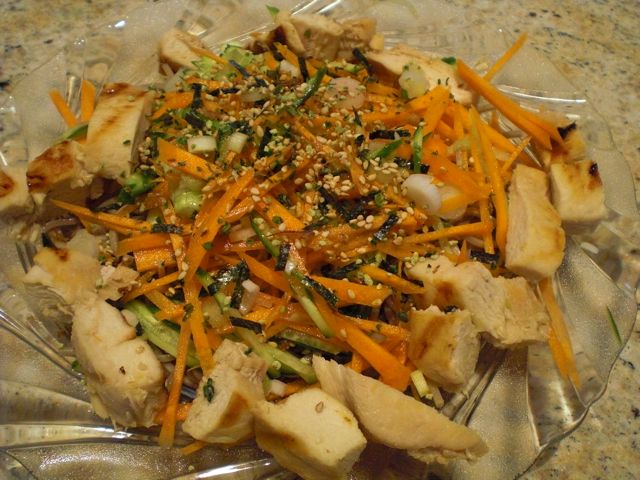I used one bone-less and skin-less chicken breast (for two servings). I butterflied the thickest potion to make it even in thickness. I, then, smeared soy sauce and grated ginger root on both sides of the meat and let it stand for 5 minutes while my Foreman's grill preheated. I cooked the breast for less than 2 minutes or until just done.

The rest of the salad components were whatever was available in the fridge. I julienned carrot (one medium) and cucumber (one American Mini-cucu). I also finely chopped scallion (two). I also happened to have leftover cooked soba noodles.
Assembly: I placed the soba on the bottom of the plate and piled the carrot, cucumber and scallion on the top. I cut the grilled chicken in 1/2 inch strips and placed it around the periphery of the plate.
Sauce: I just mixed "mentsuyu (x2 concentrated)", sesame oil, and grated ginger and poured it (not too much) over the salad. I garnished it with Wasabi flavored "frikake" which also contains sesame seeds and nori strips.
We had this as a lunch but this could be a perfectly good "shime' 〆 dish. Obviously you could make many variations of this type of Japanified salads.
